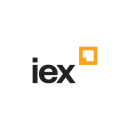Cosmic dawn.
That was one of the missions of the James Webb Telescope when it was launched into space in December of 2021: find traces from the light of the first galaxies 13.5 billion years ago.
The position and technical capabilities of the James Webb Telescope are far superior and therefore more poised to see further out into an ever-expanding universe. Since its launch, the telescope has documented not only traces of light from early galaxies, it also found an exoplanet that is estimated to be 8.6 times larger than Earth and holds “carbon-bearing molecules including methane and carbon dioxide,” according to NASA.
The James Webb Telescope is also notable for being an open-access scientific resource. To use this remarkable technology, one simply has to submit a proposal. Granted, only the most well-researched and clear missions were chosen, but guiding the telescope’s objective for a short period of time was indeed open to anyone.
What made those proposals stand out is not dissimilar to what makes a candidate stand out for a mission-driven employer — a clear alignment of values, goals and the action to back it up.
Stories like the James Webb Telescope might leave one looking for more meaning out of their own work. Fortunately, mission-driven organizations are out there — and, contrary to the galaxies being explored by the James Webb Telescope, they’re local.
Built In sat down with four leaders who shared how their NYC-based companies are moving their missions forward and finding new team members with similar trajectories.

Garner Health is a healthcare tech company that helps connect patients with the right doctors.
What is your company’s mission? What problems are you solving?
Garner Health is on a mission to transform the U.S. healthcare economy by homing in on the most impactful factor in patient care — the doctor.
For too long, patients have endured low-quality care and excessive costs when they simply do what most patients do — take their doctor’s advice. The problem is, not all doctors’ advice is created equal. For the same condition, one doctor may resolve it completely while another performs unnecessary procedures with little benefit. It’s hard for patients to tell the difference.
We’re solving this by analyzing the country’s largest collection of claims data to identify the best doctors, then covering out-of-pocket costs when a patient sees them. Our product is simple — we direct employees to the best doctors in their network. It’s a win-win-win. The company saves on costs and absenteeism. The employee saves on expenses and gets better faster. The best doctors get more business.
By establishing a virtuous cycle where exceptional doctors are rewarded, we aim to build an equitable system where every American benefits from the best care.
By establishing a virtuous cycle where exceptional doctors are rewarded, we aim to build an equitable system where every American benefits from the best care.”
How does your mission help the business stay on track?
Like many companies that process petabytes of information, Garner must apply a structured approach to turn it into useful insights. At Garner, we apply that engineering mindset to every aspect of our business.
So, we build the mission into everything we do. We stay on track by taking the time to build a track — a set of mechanisms that ensures each move we make drives the mission forward.
It’s written into the opening notions of our company values: “Every decision we make drives our mission forward. Everything else is secondary.”
It’s built into every moment of the employee experience — from the way we hire, to how we determine promotions to how we handle individual performance conversations.
We’ve organized our product and technology teams around mission-aligned product pods and we’ve aligned our company KPIs to what will advance our mission most. Every potential product must move the needle on those KPIs to qualify for engineering resources.
None of these individual examples are revolutionary, but we stick to all of them unwaveringly. And there are many, many more examples. Together, they create inevitable momentum towards the mission.
Plus, we think about it a lot.
How can jobseekers cut through the fluff to determine whether a company has a mission worth supporting?
Many of us feel better at work — and do our best work — when we care about our company’s mission and can tell we’re actually impacting it. But how do you find this dream alignment?
First, mission alignment is extremely personal. Write down your core values and interests. Focus on companies whose missions resonate there.
Second, a worthy company won’t just have a compelling mission, it will have a track record of decisions and actions that bring that mission to life. Look for consistency between words and deeds.
Finally, so many startups have great missions, but you’re only going to feel like you’re making an impact on something if the company is successful. If you’re eyeing an early-stage company, gauge its viability. Look at financial indicators like investors, runway and revenue trends.
How do you find this out? Don’t just read the website, look for articles about the company. What lists is it on? Leave no stone unturned to talk to current and former employees. Look for those who left for a great opportunity — they have the most balanced perspective.
Doing this homework can mean the difference between a job and a mission.
Clear Street is a fintech company that supports a global market.
What is your company’s primary goal?
Clear Street is building financial infrastructure for today’s institutions. Founded in 2018, Clear Street is an independent, non-bank prime broker replacing the legacy infrastructure used across capital markets.
The financial industry still relies on outdated technology developed in the 1970s. The 50-year-old COBOL mainframes are still in use today , creating a number of complex problems. Over time, firms built new technology on top of antiquated technology. This process is not only frustrating and inefficient — it kills profit margins and can increase risk.
Clear Street started from scratch by building a completely cloud-native clearing and custody system designed for today’s complex, global market. We've focused heavily on creating API-first platforms — such as clearing, settlement and custody — so that we can scale to other parts of the market. Our proprietary technology platform adds significant efficiency to the market while focusing on minimizing risk and cost for clients.
In summary, Clear Street is on a mission to modernize the foundational infrastructure that improves access to capital markets for all participants in all regions.
How does your mission help the business stay on track?
Our mission is to replace the outdated infrastructure used across capital markets; that serves as a north star in everything we do. It tells us that we must always focus on client needs and how we can add value on a daily basis. We make every decision and measure every outcome based on how well it best serves our clients’ needs.
For example, when building products and services, we think beyond the core features we must implement — we also consider the interactions between various Clear Street systems and external entities. We assess the ergonomics of the product or service and build designs that fit seamlessly into existing industry workflows. In technical terms, we think about the APIs exposed by our system so that our products and services can integrate and add value in innovative ways.
We think about the APIs exposed by our system so that our products and services can integrate and add value in innovative ways.”
How can jobseekers cut through the fluff to determine whether a company has a mission worth supporting?
Job seekers should look beyond blanket mission statements and evaluate whether a company’s actions and innovations show that it is mission-driven. They must consider recent investments to see if a company is truly committed to solving large problems and moving their industry or society forward. They must also evaluate if the company leadership and investors are interested in and committed to making long-term commitments to achieve these goals. If stakeholder engagements focus on the short term, that should be scrutinized carefully.
Clear Street's mission to modernize and improve access to capital markets will move the industry forward from decades-old technology. In April 2023, we completed the second tranche of our $435 million Series B capital raise. The funding supports Clear Street’s mission and our plans to expand its reach across new markets and asset classes, accelerate future product offerings, increase availability to all market participants and offer solutions for clients looking to migrate to a single-source platform.
Chapter is a health tech company that optimizes health insurance for older Americans through greater choice and clarity while minimizing cost and complexity.
How does your company’s mission tie into solving bigger problems?
Chapter’s mission is to transform the way that older Americans experience retirement. The current infrastructure for retirement is broken, and there are few good resources for older Americans. At the same time, the goals one may have for retirement are inextricably linked. There is a significant opportunity to develop a platform and suite of products that solve the challenges retirees face in a compounding way.
We’ve started by building the only consumer-oriented Medicare navigation platform to make it easy for Americans to get the right Medicare insurance plan for their needs. We also help our members get the most out of their plans. We help them save time and money and get the healthcare they need. We’re excited to earn our members’ trust to provide an even broader array of products as we continue to build.
How does your mission impact the organization each day?
Our mission drives every important decision we make across the organization. It becomes a grounding for every person at Chapter — we do what is best for members, above all else. That decision-making framework is in our minds as we determine how to train our Medicare advisors, and it’s in our minds as we determine what new features to build or explore, inside and outside of Medicare. We’re hyper-focused on providing real value and impact more than on monetizing.
We frequently discuss trade-offs we’re willing to make to remain focused on our mission. We have to be willing to sacrifice things to put our members’ interests above our own. We sacrifice near-term economics every day to serve our members by enrolling people in the right Medicare plan, not just the one that earns Chapter the most money.
If you aren’t willing to sacrifice something for your mission, you’re just a company with a mission, not a mission-driven company.
If you aren’t willing to sacrifice something for your mission, you’re just a company with a mission, not a mission-driven company.”
How can jobseekers cut through the fluff to determine whether a company has a mission worth supporting?
Ask numerous people at the company what the mission is and how it informs their daily decisions. If you ask any Chapterian this question, they’ll talk about how our first value is to put members first, and they invoke that value on a daily basis. It’s also important to understand the decisions a business might make that go against their mission and the values they espouse, especially when it helps their own bottom line. If it’s easy for the team to recount these instances, they don’t live and breathe their mission like they say they do.
Ultimately, it’s up to each person to decide what mission they want to spend their time advancing. It’s also reasonable for a company’s mission to be to make as much money as it can for its shareholders. There’s nothing wrong with that — it’s just important that the company is transparent about that from the outset and jobseekers can determine for themselves what mission they want to support.
IEX is a tech company that provides a financial data platform and a transparent stock exchange.
What is your company’s mission?
IEX innovates for fairness and performance. That's true, and since the early days of our founding as a stock exchange, we’ve been about building a level playing field — creating a fairer and more transparent stock market to better serve investors. We want to push equity markets into a healthier, more investor-centric direction. The work we do here improves the markets as a whole.
We want to push equity markets into a healthier, more investor-centric direction. The work we do here improves the markets as a whole.”
What is the best part of being mission-focused?
The best part of having a mission is that it is an awesome device for preventing conflicts of interest. At IEX, everyone is aligned to a common set of goals, so no part of the organization succeeds at the expense of another. We’ve created and maintained a culture of learning. Cross-team collaboration has always been a very important key to our success.
How can job seekers cut through the fluff to determine whether a company has a mission worth supporting?
Simply put: ask for proof points. Look for a place that is set up for success and where there is a willingness to sacrifice for the principles of the mission.













